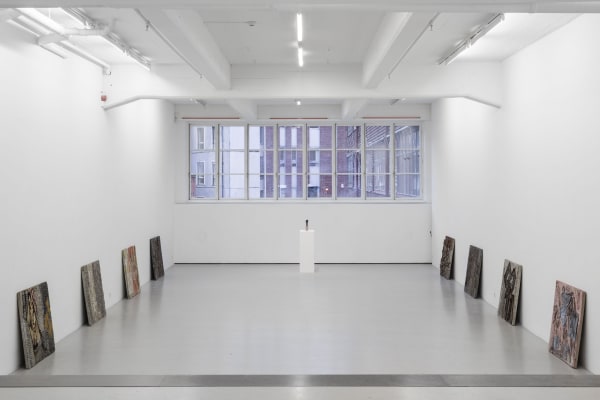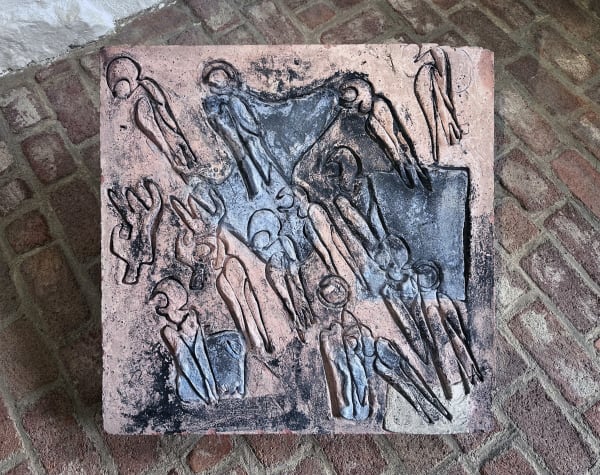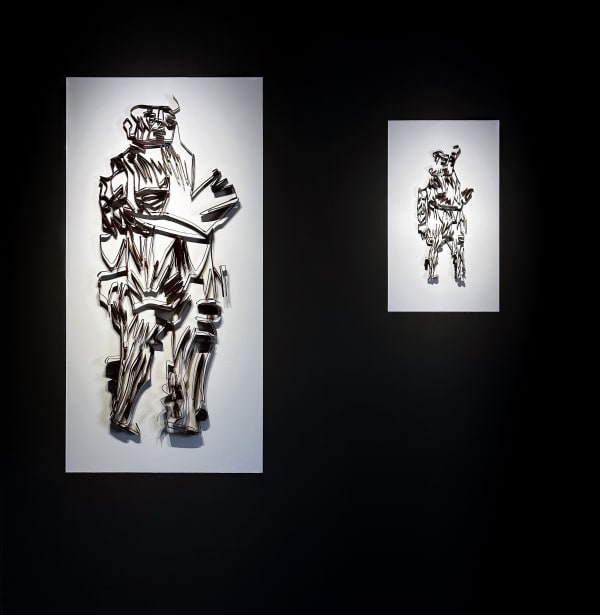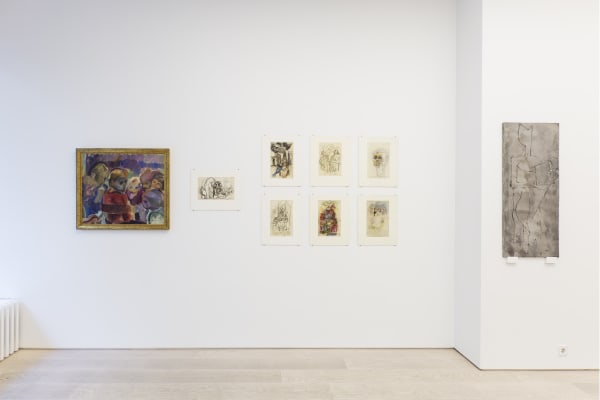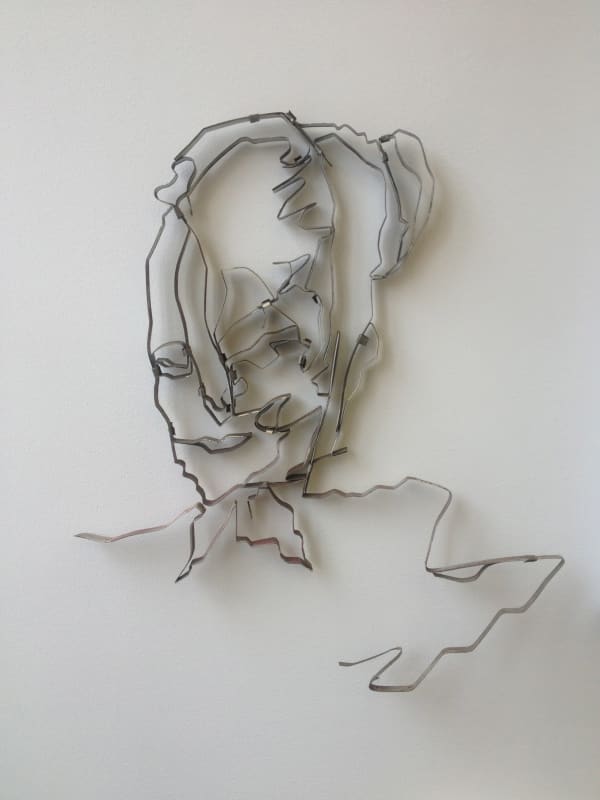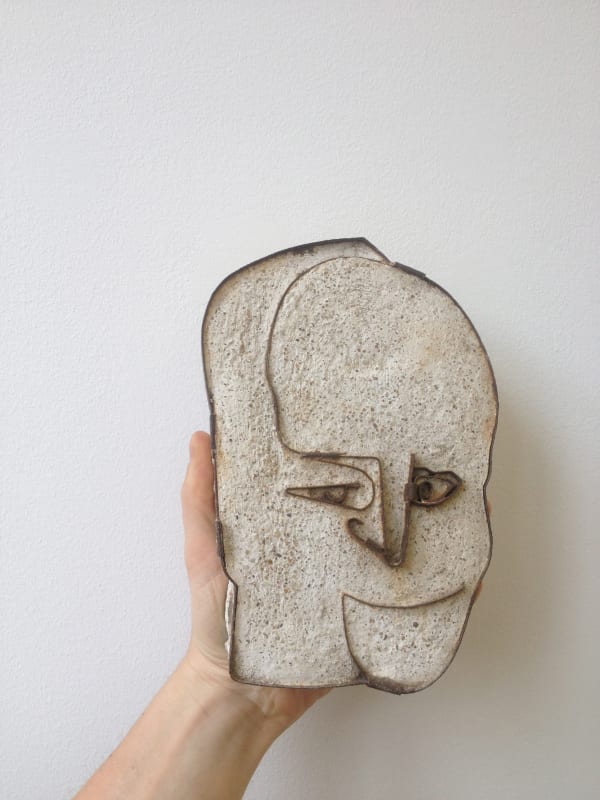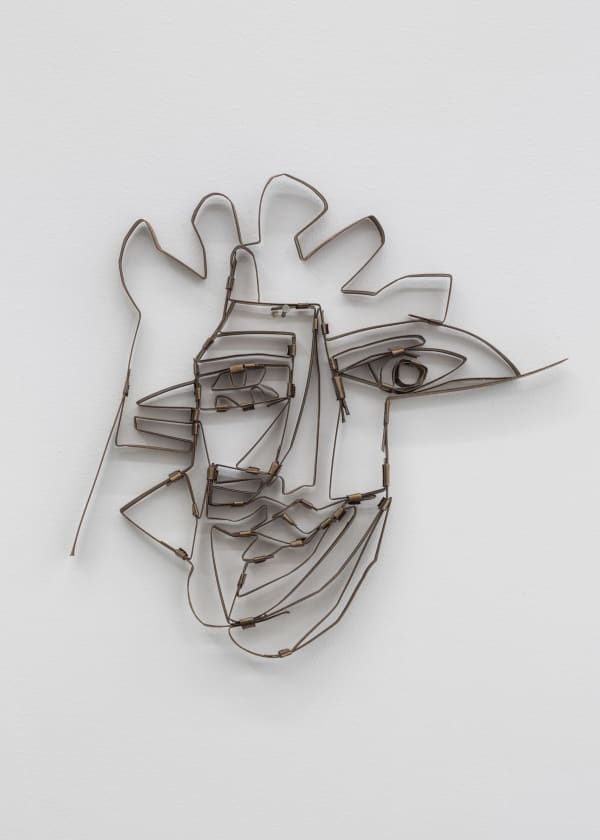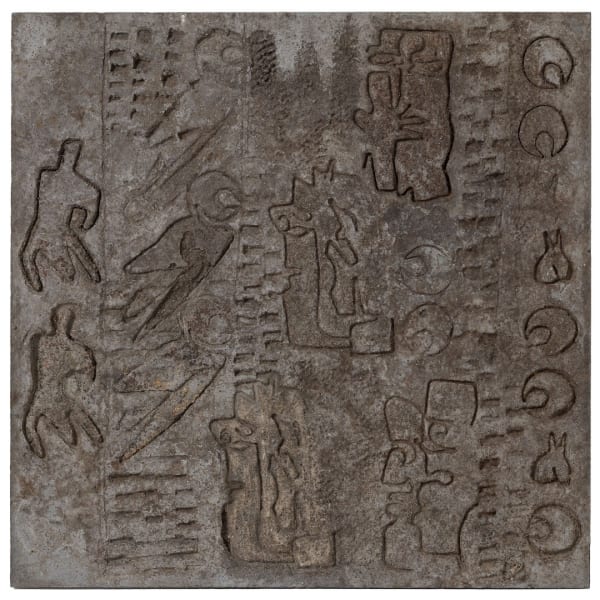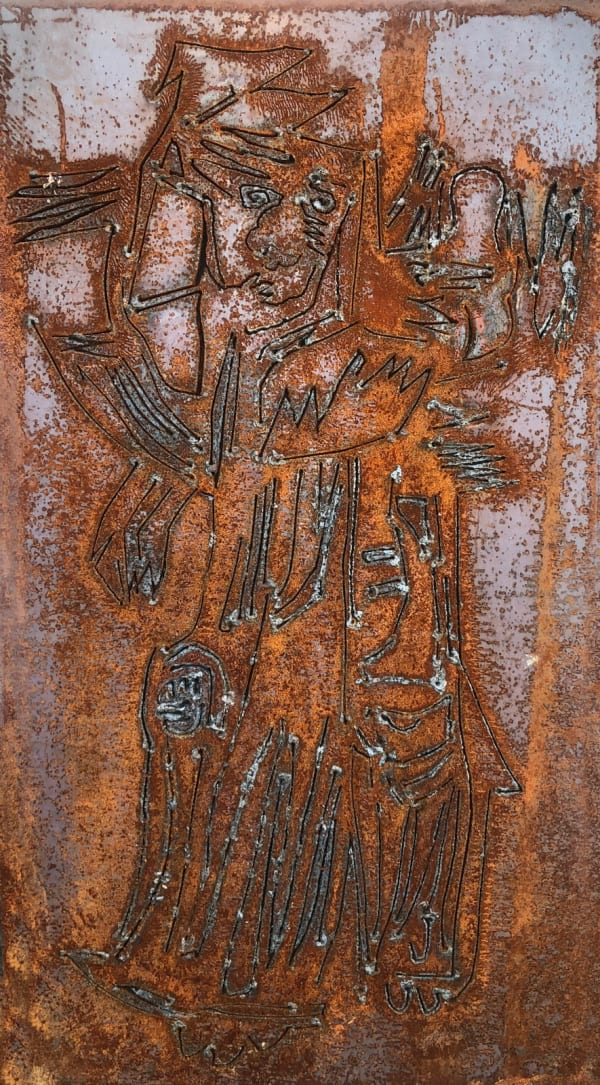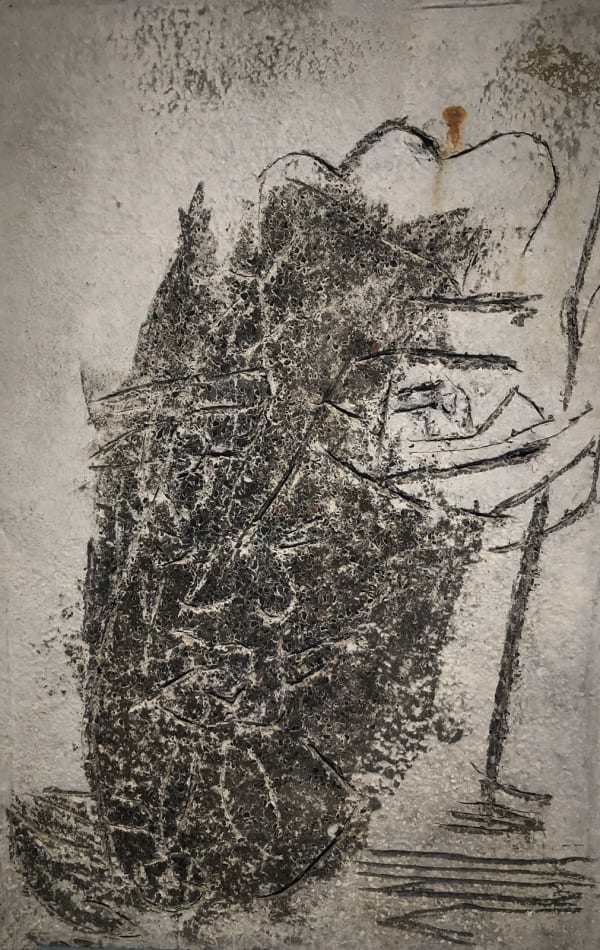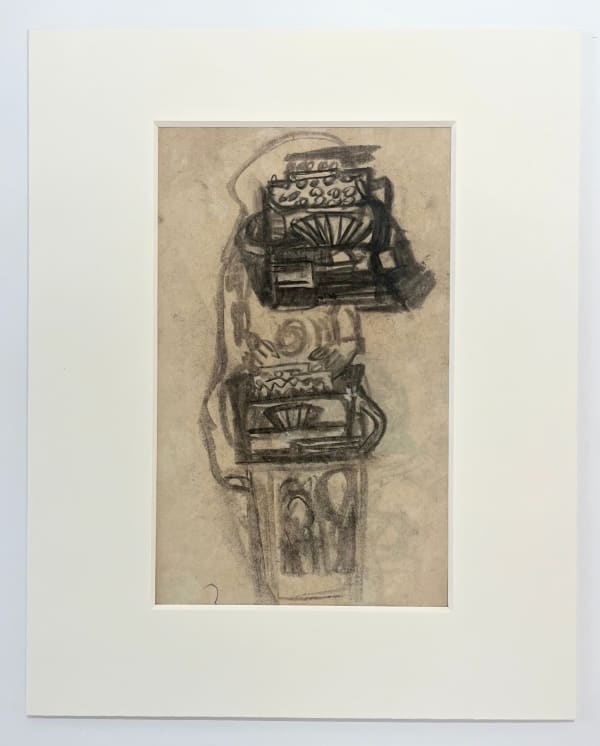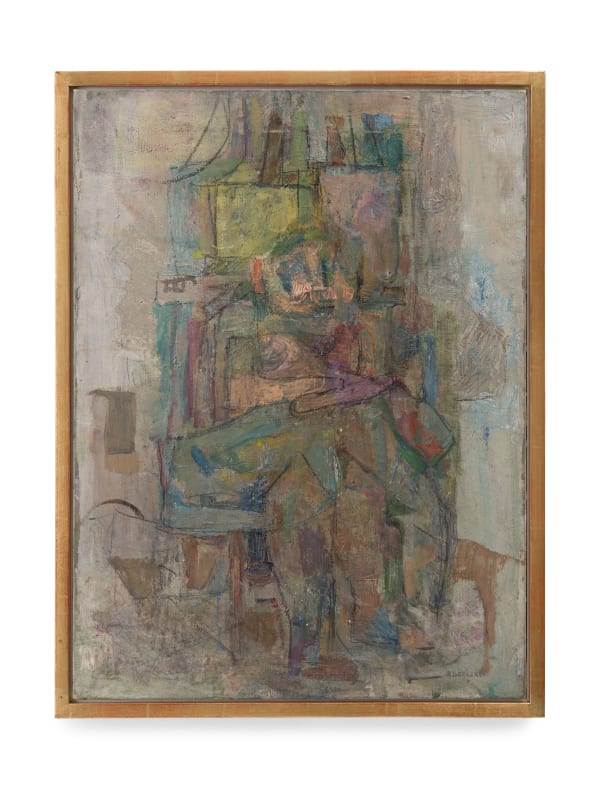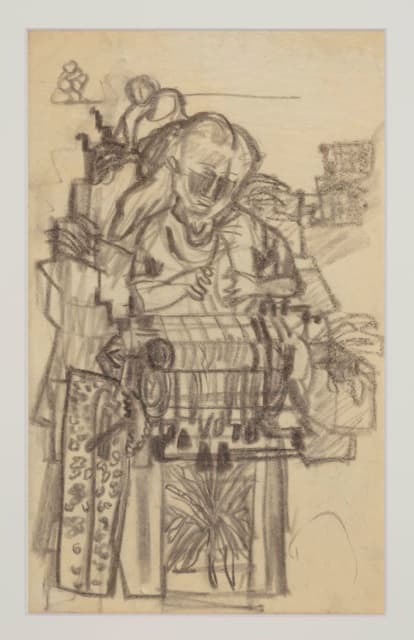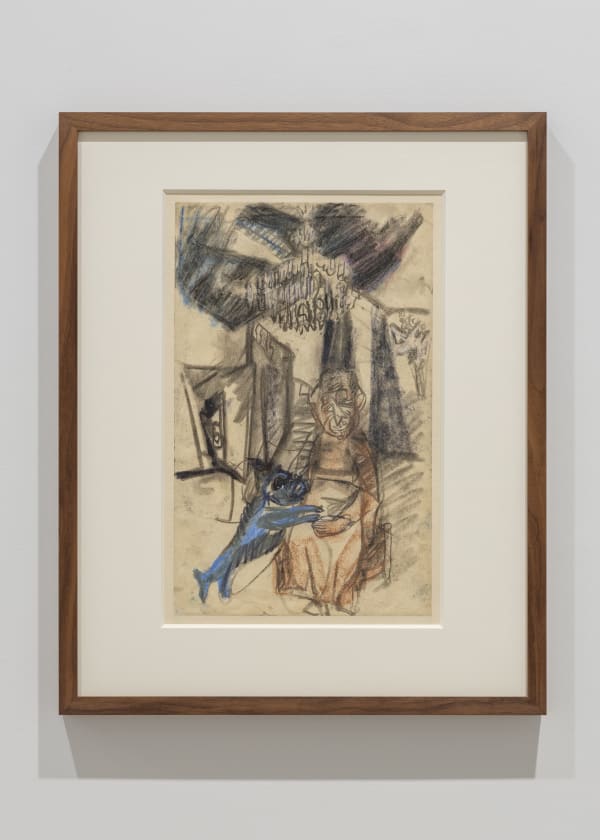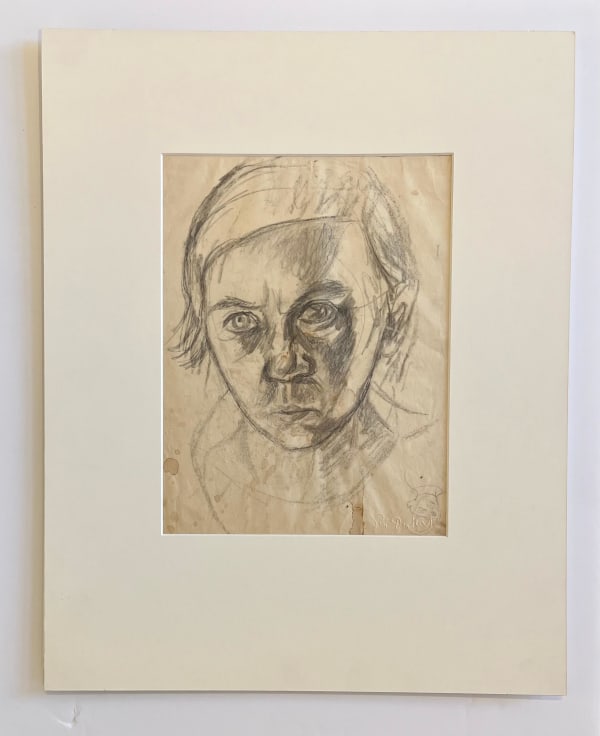Siri Derkert
Siri Derkert (1888–1973), one of the few prominent female artists in Swedish art history, is known for her highly personal expressionist style and for her monumental public commissions, often of a political nature. Many of her works explore her ardent interest in women’s liberation as well as environmental issues, fields in which she was a forerunner and raised issues still relevant today.
Siri Derkert's evolution from an elegant contemporary modernism in the 1910s to the pronounced political public art she became famous for in the 1960s, is a testament to the various ways an artist can relate to the private and the political.
At a time when Sweden did not have female suffrage and marriage meant that a woman was placed under her husband’s guardianship, Derkert’s work was further formed by the personal experience of being a single mother of three. The images from the private sphere of family and friends from the 20s and 30s are the result of an experience that in Derkert's world had an obvious political dimension: women’s rights. Feminism was not just about equal rights in professional and public life, but also about the single woman's right to care for and raise her own children – and her right to create a room for artistic work. Towards the end of the 1930s, Siri Derkert's life eventually enters a completely new phase. The political commitment in the form of feminism that had been obvious for a long time, is given a new dimension during the last years of the 1930s through the Spanish Civil War and Derkert’s meetings with refugees from Germany and becomes a concrete expression in response to the aggressive expansion of right wing-nationalism in Europe. During WWII Derkert's political involvement eventually adopts new forms through participation in adult education and organized political work. The circuit of motifs is now being expanded seriously outside family life and Siri Derkert's political portraits from the 40s, 50s and 60s are greatly stylized figures in an expressive manner.
Siri Derkert represented Sweden in the Nordic Pavilion at the Venice Biennale in 1962 and had an extensive retrospective exhibition at the Stedelijk Museum in Amsterdam the same year. Her works have been shown in two retrospectives at the Moderna Museet in Stockholm (1960 and 2011).
Her works can be found in many Swedish museums, among them Nationalmuseum, Stockholm, Moderna Museet, Stockholm, Malmö Art Museum, Gothenburg Museum of Art, Skövde Art Museum and Museum of Artistic Process and Public Art, Lund, but also The British Museum, London.
Siri Derkert studied at Althins målarskola from 1904 and at Royal Academy of Fine Arts 1911–13. She also studied art at Académie Colarossi and Académie de la Grande Chaumière in Paris.
-

Siri Derkert
Paris 24 May - 26 Jul 2025Siri Derkert (1888-1973), one of the few prominent female artists in Swedish art history, is known for her highly personal expressionist style and for her monumental public commissions, often of...Read more -

Siri Derkert
Stockholm 11 Jan - 17 Feb 2024Opening: Thursday January 11 at 17:00 - 20:00 Siri Derkert’s life and work spanned most of the 20th century – a period of great societal and cultural change which was...Read more -

Siri Derkert – The personal is political
Stockholm 14 Mar - 27 Apr 2019Andréhn-Schiptjenko is proud to present the second exhibition of works by Siri Derkert (1888–1973), spanning the period of 1940 to 1970. Siri Derkert is known for her highly personal expressionist...Read more -

Group show
Stockholm 24 May - 6 Jul 2018Andréhn-Schiptjenko is proud to present a group show with gallery artists Jacob Dahlgren, Siri Derkert, Annika von Hausswolff, Brad Kahlhamer, Linder, Tony Matelli and Nandipha Mntambo and introducing Yngvild Saeter...Read more -

Siri Derkert
Stockholm 13 Nov - 20 Dec 2014Andréhn-Schiptjenko proudly presents the first extensive solo show with works by Siri Derkert. The opening takes place on Thursday, November 13, 5-8 pm. Siri Derkert (1888–1973) is known for her...Read more
-
 Siri DerkertInstallation view, Senapsträdet och himlens fåglar (The Mustard Tree and the Birds of the Air), duo exhibition with Theresa Traore Dahlberg, Rikstolvan, Simrishamn, Sweden, 2024
Siri DerkertInstallation view, Senapsträdet och himlens fåglar (The Mustard Tree and the Birds of the Air), duo exhibition with Theresa Traore Dahlberg, Rikstolvan, Simrishamn, Sweden, 2024 -
 Siri DerkertInstallation view, Senapsträdet och himlens fåglar (The Mustard Tree and the Birds of the Air), duo exhibition with Theresa Traore Dahlberg, Rikstolvan, Simrishamn, Sweden, 2024
Siri DerkertInstallation view, Senapsträdet och himlens fåglar (The Mustard Tree and the Birds of the Air), duo exhibition with Theresa Traore Dahlberg, Rikstolvan, Simrishamn, Sweden, 2024 -
 Siri DerkertInstallation view, Senapsträdet och himlens fåglar (The Mustard Tree and the Birds of the Air), duo exhibition with Theresa Traore Dahlberg, Rikstolvan, Simrishamn, Sweden, 2024
Siri DerkertInstallation view, Senapsträdet och himlens fåglar (The Mustard Tree and the Birds of the Air), duo exhibition with Theresa Traore Dahlberg, Rikstolvan, Simrishamn, Sweden, 2024 -
 Siri DerkertInstallation view, Senapsträdet och himlens fåglar (The Mustard Tree and the Birds of the Air), duo exhibition with Theresa Traore Dahlberg, Rikstolvan, Simrishamn, Sweden, 2024
Siri DerkertInstallation view, Senapsträdet och himlens fåglar (The Mustard Tree and the Birds of the Air), duo exhibition with Theresa Traore Dahlberg, Rikstolvan, Simrishamn, Sweden, 2024
-
 Siri DerkertInstallation view, Senapsträdet och himlens fåglar (The Mustard Tree and the Birds of the Air), duo exhibition with Theresa Traore Dahlberg, Rikstolvan, Simrishamn, Sweden, 2024
Siri DerkertInstallation view, Senapsträdet och himlens fåglar (The Mustard Tree and the Birds of the Air), duo exhibition with Theresa Traore Dahlberg, Rikstolvan, Simrishamn, Sweden, 2024 -
 Siri DerkertInstallation view, Senapsträdet och himlens fåglar (The Mustard Tree and the Birds of the Air), duo exhibition with Theresa Traore Dahlberg, Rikstolvan, Simrishamn, Sweden, 2024
Siri DerkertInstallation view, Senapsträdet och himlens fåglar (The Mustard Tree and the Birds of the Air), duo exhibition with Theresa Traore Dahlberg, Rikstolvan, Simrishamn, Sweden, 2024 -
 Siri DerkertInstallation view Andréhn-Schiptjenko, Stockholm, Sweden, 2024
Siri DerkertInstallation view Andréhn-Schiptjenko, Stockholm, Sweden, 2024 -
 Siri DerkertInstallation view Andréhn-Schiptjenko, Stockholm, Sweden, 2024
Siri DerkertInstallation view Andréhn-Schiptjenko, Stockholm, Sweden, 2024
-
 Siri DerkertInstallation view Andréhn-Schiptjenko, Stockholm, Sweden, 2024
Siri DerkertInstallation view Andréhn-Schiptjenko, Stockholm, Sweden, 2024 -
 Siri DerkertInstallation view Andréhn-Schiptjenko, Stockholm, Sweden, 2024
Siri DerkertInstallation view Andréhn-Schiptjenko, Stockholm, Sweden, 2024 -
 Siri DerkertInstallation view Andréhn-Schiptjenko, Stockholm, Sweden, 2024
Siri DerkertInstallation view Andréhn-Schiptjenko, Stockholm, Sweden, 2024 -
 Siri DerkertInstallation view Andréhn-Schiptjenko, Stockholm, Sweden, 2024
Siri DerkertInstallation view Andréhn-Schiptjenko, Stockholm, Sweden, 2024
-
 Siri DerkertInstallation view Andréhn-Schiptjenko, Stockholm, Sweden, 2024
Siri DerkertInstallation view Andréhn-Schiptjenko, Stockholm, Sweden, 2024 -
 Siri DerkertInstallation view Andréhn-Schiptjenko, Stockholm, Sweden, 2019
Siri DerkertInstallation view Andréhn-Schiptjenko, Stockholm, Sweden, 2019 -
 Siri DerkertInstallation view Andréhn-Schiptjenko, Stockholm, Sweden, 2019
Siri DerkertInstallation view Andréhn-Schiptjenko, Stockholm, Sweden, 2019 -
 Siri DerkertInstallation view Andréhn-Schiptjenko, Stockholm, Sweden, 2019
Siri DerkertInstallation view Andréhn-Schiptjenko, Stockholm, Sweden, 2019
-
 Siri DerkertInstallation view Andréhn-Schiptjenko, Stockholm, Sweden, 2019
Siri DerkertInstallation view Andréhn-Schiptjenko, Stockholm, Sweden, 2019 -
 Siri DerkertInstallation view Andréhn-Schiptjenko, Stockholm, Sweden, 2014
Siri DerkertInstallation view Andréhn-Schiptjenko, Stockholm, Sweden, 2014 -
 Siri DerkertInstallation view Andréhn-Schiptjenko, Stockholm, Sweden, 2014
Siri DerkertInstallation view Andréhn-Schiptjenko, Stockholm, Sweden, 2014 -
 Siri DerkertInstallation view Andréhn-Schiptjenko, Stockholm, Sweden, 2014
Siri DerkertInstallation view Andréhn-Schiptjenko, Stockholm, Sweden, 2014
-
 Plundring, svält, förgiftning..., Sent 1960-tal
Plundring, svält, förgiftning..., Sent 1960-tal -
 Ungdomen kommer..., Sent 1960-tal
Ungdomen kommer..., Sent 1960-tal -
 Landskap med figur I, n.d.
Landskap med figur I, n.d. -
 Fogelstadkvinna (Honorine Hermelin), n.d.
Fogelstadkvinna (Honorine Hermelin), n.d. -
 Samtal, n.d.
Samtal, n.d. -
 Sittande flicka, n.d.
Sittande flicka, n.d. -
 Tora, n.d.
Tora, n.d. -
 Tora II, n.d.
Tora II, n.d. -
 Självporträtt, n.d.
Självporträtt, n.d. -
 Barnbarn (Stefan), ca. 1956
Barnbarn (Stefan), ca. 1956 -
 Ugglor, Ca 1961-62
Ugglor, Ca 1961-62 -
 Intellektuellt par, 1967-69
Intellektuellt par, 1967-69 -
 Pontus Hultén, 1967-69
Pontus Hultén, 1967-69 -
 Olof Lagercrantz, 1966-73
Olof Lagercrantz, 1966-73 -
 Skå-Gustav, 1966-73
Skå-Gustav, 1966-73 -
 Hans Palmstierna, 1966-73
Hans Palmstierna, 1966-73 -
 Alva Myrdal, 1966-73
Alva Myrdal, 1966-73 -
 Georg Borgström, 1966-73
Georg Borgström, 1966-73 -
 Thorild, 1966-1973
Thorild, 1966-1973 -
 Ny Kultur, nytt samhälle, 1965-69
Ny Kultur, nytt samhälle, 1965-69 -
 Ansikten (Skiss till Sverigeväggen), 1965-69
Ansikten (Skiss till Sverigeväggen), 1965-69 -
 Senapsträdet och himlens fåglar, 1961-62
Senapsträdet och himlens fåglar, 1961-62 -
 Senapsträdet och himlens fåglar, 1961-62
Senapsträdet och himlens fåglar, 1961-62 -
 Senapsträdet och himlens fåglar, 1961-62
Senapsträdet och himlens fåglar, 1961-62 -
 Skiss till Östermalmstorgs tunnelbanestation med familjemotiv, 1960s
Skiss till Östermalmstorgs tunnelbanestation med familjemotiv, 1960s -
 Figur, 1960s
Figur, 1960s -
 Fogelstadssångerska, 1960's
Fogelstadssångerska, 1960's -
 Figur, 1960's
Figur, 1960's -
 Barn, 1960's
Barn, 1960's -
 Ansikte, 1960's
Ansikte, 1960's -
 Figur (Talare), 1960's
Figur (Talare), 1960's -
 Figur (Talare), 1960's
Figur (Talare), 1960's -
 Figur, 1960's
Figur, 1960's -
 Ansikte, 1960's
Ansikte, 1960's -
 Självporträtt, 1956-58
Självporträtt, 1956-58 -
 Skrivmaskin (Skiss till Kvinnopelaren), 1956-1958
Skrivmaskin (Skiss till Kvinnopelaren), 1956-1958 -
 Självporträtt 1, 1956
Självporträtt 1, 1956 -
 Knypplerska (Skiss till Kvinnopelaren), 1950-tal
Knypplerska (Skiss till Kvinnopelaren), 1950-tal -
 Fåglar och människa, 1950-69
Fåglar och människa, 1950-69 -
 Fiskrenserskor, 1949-1950
Fiskrenserskor, 1949-1950 -
 Mormor med Puck, 1945-49
Mormor med Puck, 1945-49 -
 Mormor med Puck, 1945-49
Mormor med Puck, 1945-49 -
 Emilia Fogelklou, 1945
Emilia Fogelklou, 1945 -
 Fogelstadskören, 1943-54
Fogelstadskören, 1943-54 -
 Talare på Fogelstad, 1943-54
Talare på Fogelstad, 1943-54 -
 Katter, 1940's
Katter, 1940's -
 Statarbarnen på Hersbyholm, 1932-33
Statarbarnen på Hersbyholm, 1932-33 -
 Självporträtt, 1930-tal
Självporträtt, 1930-tal -
 Naima (Wifstrand) som Merlin, 1930's
Naima (Wifstrand) som Merlin, 1930's -
 Blå huset på Simpnäs (Ljust hus, mörk himmel), 1925-29
Blå huset på Simpnäs (Ljust hus, mörk himmel), 1925-29 -
 Sara i fönstret, 1924
Sara i fönstret, 1924 -
 Porträtt med senare tillritad figur (Motiv från Stockholms skärgård, Simpnäs), 1920's
Porträtt med senare tillritad figur (Motiv från Stockholms skärgård, Simpnäs), 1920's -
 Självporträtt, 1920's
Självporträtt, 1920's -
 Självporträtt, 1906-08
Självporträtt, 1906-08
-

Siri Derkert: Snygg matchning av konstnärliga syskonsjälar på Rikstolvan
Birgitta Rubin, Dagens Nyheter, July 30, 2024 -

Siri Derkert: Konst som speglar mänsklighetens livsavgörande kamp
Birgitta Rubin, Dagens Nyheter, January 13, 2024 -

Siri Derkert: Derkerts engagemang är mer aktuellt än någonsin
Clemens Poellinger, Svenska Dagbladet, April 10, 2019 -

Siri Derkert: En nödvändig konstnärlig kalibrering
Susanna Slöör, Omkonst, April 3, 2019 -

Siri Derkert: En farlig tid för Siri Derkert
Frans Josef Petersson, Kunstkritikk, March 26, 2019 -

Siri Derkert: Derkert skapade nytt i betong
Birgitta Rubin, Dagens Nyheter, November 20, 2014 -

Siri Derkert: Siri Derkert på Moderna Museet
Magdalena Dziurlikowska, Göteborgs-Posten, September 1, 2011 -

Siri Derkert: Siri Derkert på Moderna Museet
Magnus Bons, Konsten.net, June 29, 2011 -

Siri Derkert: Konstnären som sanningsvittne
Leif Mattsson, Omkonst, June 15, 2011 -

Siri Derkert: Derkerts konst föds ur livet
Joanna Persman, Svenska Dagbladet, June 1, 2011 -

Siri Derkert: Siri Derkert på Moderna museet, Stockholm
Birgitta Rubin, Dagens Nyheter, May 31, 2011 -

Siri Derkert: Motvindens utmaning
Leif Mattsson, Omkonst, June 21, 2004 -

Siri Derkert: Rastlöst sökande hand gav materialen liv
Mårten Castenfors, Svenska Dagbladet, March 4, 1995 -

Siri Derkert: Kolorist under protest
Peder Alton, Dagens Nyheter, February 28, 1995 -

Siri Derkert: Siri Derkerts storhet
Stig Johansson, Svenska Dagbladet, November 8, 1980






